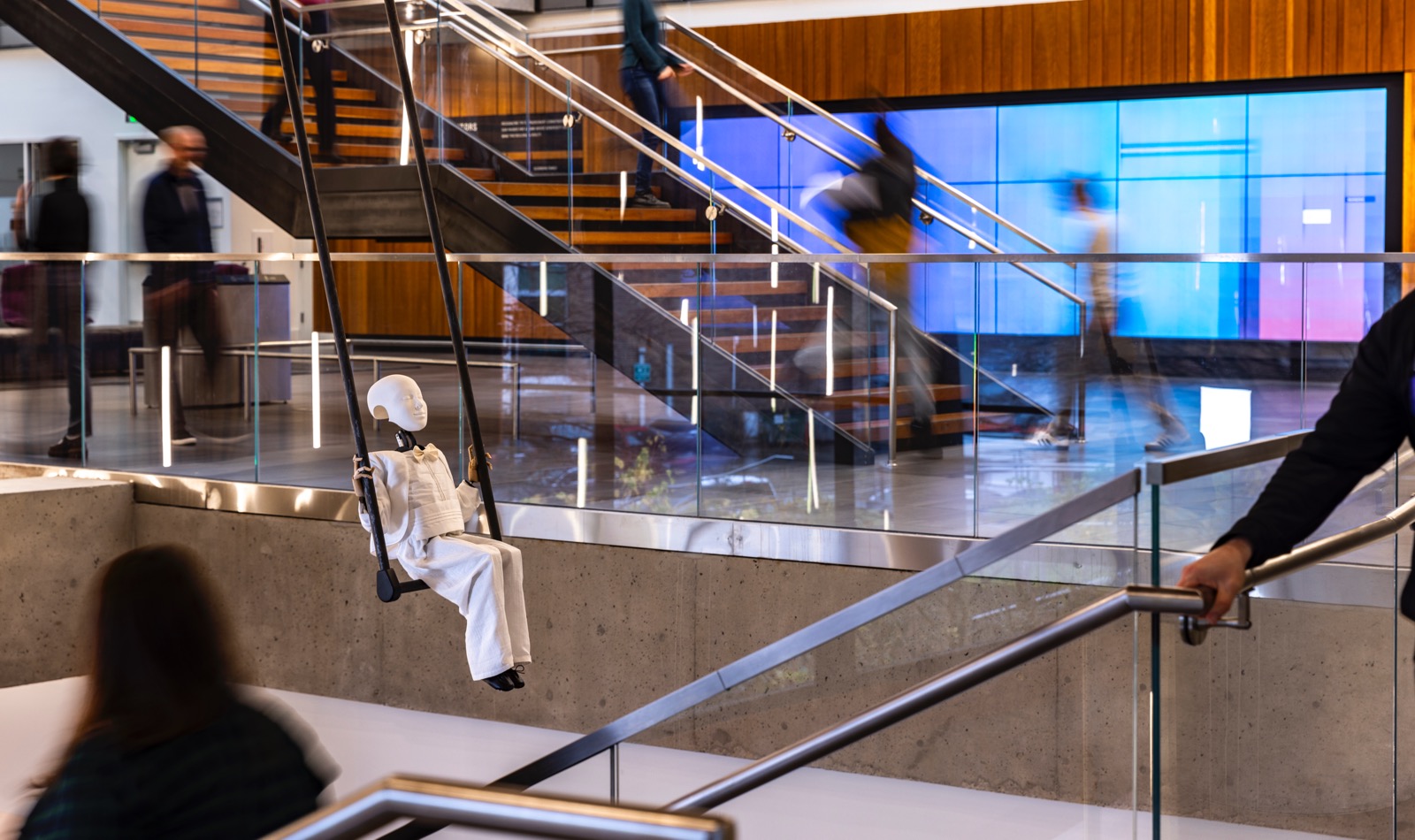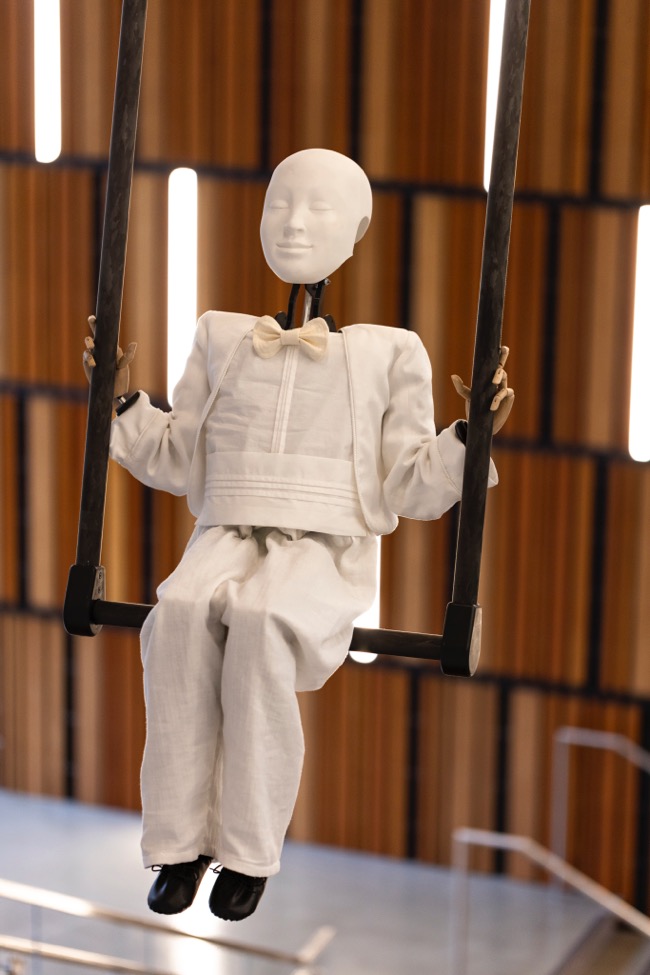By Ed Kromer
Not Afraid of Falling, the whimsical new art installation in the Gates Center for Computer Science & Engineering, is layered with metaphor, meaning — and a bit of magic.

Not Afraid of Falling at the Bill & Melinda Gates Center for Computer Science & Engineering. Photo credit: Mark Stone / University of Washington.
In the atrium of the Bill & Melinda Gates Center for Computer Science & Engineering, high above its sunken stairway, a curious figure perches on the seat of a flying trapeze.
It appears, at first glance, to be a carefree young child dressed formally in white. But look closer and you’ll notice the mechanical anatomy of a vintage robot. Its bionic fingers hold the rigging lightly. Its alabaster mask bears a serene expression of delight.
Not Afraid of Falling — the new art installation in the Gates Center — is the commissioned work of internationally acclaimed mixed-media artist Glenn Kaino, who describes his creation as a “mediation of time and life… a reminder of the fragility of our existence and a symbol of our humanity and our instinct to invent and create.”
More than just an arresting visual, Not Afraid of Falling is a tableau layered with metaphor and meaning. And even a little magic.
Though Kaino’s acrobatic automaton appears to be suspended in time and space, it does, in fact, move — only imperceptibly, as the spin of the earth underfoot, offering a subtle meditation on the rewards of perseverance. Come back tomorrow and catch the trapeze and its pilot at a different stage of a week-long arc.
Homage to classic robotics
This clever feat of art and engineering was inspired by an extraordinary remote-controlled puppet named Antonio Diavolo that was created in the 1850s by Jean-Eugène Robert-Houdin, a French magician and clockmaker.
In his day, Antonio amazed and enchanted audiences by performing seemingly autonomous feats of Olympian strength and grace on a trapeze.
More than a century later, the badly damaged remains of Antonio were recovered and restored, over seven painstaking years, by the illusionist John Gaughan.
A notable fan of Gaughan’s work was Glenn Kaino, who conceived his own fearless robotic acrobat — in a more minimalist tone — when the Paul G. Allen School of Computer Science & Engineering was looking to commission a public art installation for its new building.

Close-up of Not Afraid of Falling. Photo credit: Mark Stone / University of Washington.
Inspiration to take risks
One of the members of that commission committee was Hank Levy, professor emeritus and founding director of the Allen School. Levy, who was deeply involved in the creation of the Allen and Gates Centers, curated art installations and collections on view in both.
He admires the way that Kaino has infused art and technology in a meaningful way for the Allen School community and the UW at large.
“The goal of the architecture for both of our buildings was to create a warm and welcoming environment,” Levy says. “Art brings a humanizing influence to the highly technical space we inhabit. And, in the case of Not Afraid of Falling, it also adds a touch of mystery and magic.”
All of this conveys a vital message to passersby.
Kaino hopes the art will be “an inspiration to take chances and risks in an environment designed to be a safe space for experimentation and discovery.”
It’s no coincidence that the artwork’s title, Not Afraid of Falling, is just a single vowel away from a temperament more pertinent to those who endeavor to apply and invent cutting-edge technologies of computing, robotics and AI: not afraid of failing.
Connecting past, present and future
It’s no coincidence, either, that Kaino’s messenger, an emissary from the earliest days of robotic invention, swings fearlessly just steps away from the labs where the latest digital innovations are being dreamed up and developed.
As the installation inscription suggests, Antonio Diavolo and the artwork it has inspired demonstrate our endless fascination with human-like figures that exhibit human-like functions (the very definition of “robot”). Beyond its notes of creativity and persistence, “Not Afraid of Falling is an artistic expression of hope, intertwined with methods from the past and technology still to come.”
Not Afraid of Falling, installed in August and dedicated in October 2024, was commissioned through the generous support of Sylvia Bolton and the Leo Maddox Family. It is the latest addition to the expansive UW Public Art Collections. You can take a self-guided walking tour to see other public works on the Seattle campus and explore the entire collection of art on display at the Allen School.
Originally published January 10, 2025